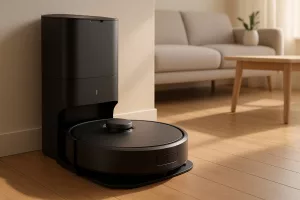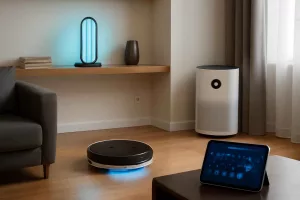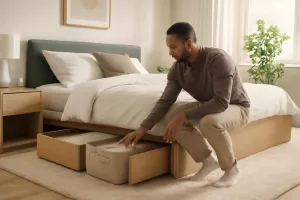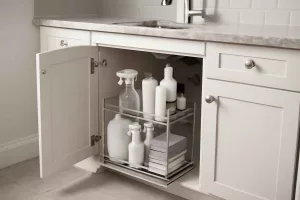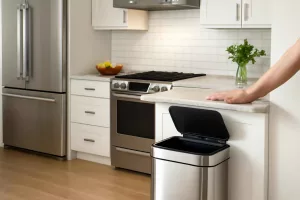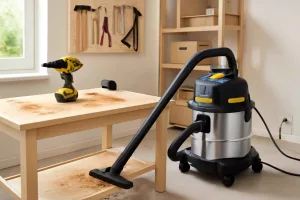Keeping windows crystal clear can feel like a never-ending chore, especially if your home has many large panes or second-story glass. If you’re tired of streaks, smudges, and hours spent climbing ladders, a robot window cleaner could be the perfect time-saving solution. These automatic window cleaning robots handle most of the work, delivering spotless results with minimal effort from you. Ready to find the best robot window cleaner for your home? Start by exploring top models like Ecovacs Winbot and Hobot Legee on Amazon for quick inspiration: shop robot window cleaners.
Why Choose a Robot Window Cleaner?
Traditional window cleaning requires the right tools, safe equipment, and plenty of time. Many homeowners invest in squeegees, scrubbers, and even pressure washers, yet still struggle to achieve professional results. If you’ve experimented with handheld steam cleaners for grout or compared a bagged vs bagless cordless stick vacuum for floors, you know that specialized tools make a big difference. Robot window cleaners are designed specifically to tackle glass surfaces, offering benefits such as:
- Hands-free operation: Load, start, and let the robot navigate your windows while you focus on other tasks.
- Safety: No more precarious ladder climbs—many models use powerful suction to adhere to vertical glass surfaces.
- Efficiency: Intelligent path-planning algorithms ensure complete coverage and consistent cleaning patterns.
- Streak-free finish: High-quality microfiber pads and multi-stage cleaning cycles deliver spotless results.
Whether you have floor-to-ceiling windows, sliding glass doors, or skylights, a window cleaning robot can simplify maintenance and keep your view clear year-round.
Key Features to Look For
Not all window cleaning robots are created equal. When evaluating models, consider these essential features to ensure you invest in a reliable, high-performing machine.
Safety and Suction System
Most window cleaning robots rely on powerful vacuum pumps to cling to the glass surface. Check the suction power rating—expressed in pascals (Pa) or kilopascals (kPa)—to ensure the device can support its own weight plus cleaning motions. Advanced models incorporate a backup battery system and safety rope, which prevents falls in case of power loss. Always verify that the robot includes CE or UL safety certification as proof of rigorous testing.
Cleaning Modes and Sensors
Look for models equipped with multiple cleaning modes, such as spot, edge, and zigzag. Spot mode is ideal for stubborn stains; edge mode tackles corners and window frames; zigzag pattern covers large, unobstructed areas efficiently. Integrated sensors detect obstacles, window frames, and edges to prevent collisions or accidental drops. Some high-end robots even adjust pressure and cleaning speed based on the glass condition.
Power, Battery Life, and Cable Management
Wired robots draw continuous power but require careful cable management to avoid tangling. Cordless models offer freedom of movement but typically provide 30–60 minutes of runtime—sufficient for average residential windows. Consider your home’s layout and window size when choosing between corded and cordless designs. Battery-powered robots often include indicator lights or app alerts to notify you when a recharge is needed.
Pad Material and Replacement Costs
Microfiber pads are standard for gentle yet thorough cleaning. Some robots include multiple reusable pads, while others use disposable wipes. Check replacement pad pricing and availability to budget for ongoing maintenance. Many brands sell multi-packs of pads or cleaning solution kits to ensure you always have fresh accessories on hand.
Top 5 Robot Window Cleaners for Home Windows
To simplify your search, we’ve compiled a list of the best robot window cleaners based on performance, usability, and customer feedback. Each selection includes key specifications, pros and cons, and an Amazon link for easy shopping.
1. Ecovacs Winbot X Self-Driving Window Cleaner
The Ecovacs Winbot X is a battery-powered, cordless model that uses four powerful suction fans and a smart navigation system. With up to 50 minutes of runtime, it tackles large glass surfaces without the hassle of tangled cords. The Winbot X features a multi-directional microfiber pad and two cleaning cycles: quick 12-minute mode for lightly soiled areas and deep 20-minute mode for stubborn grime.
- Pros: Cordless freedom, smart obstacle detection, dual cleaning modes
- Cons: High price point, pads sold separately
- Runtime: Up to 50 minutes
- Suction Power: 8 kPa
Find it on Amazon: Ecovacs Winbot X
2. Hobot Legee 668 Hybrid Window and Floor Robot
The Hobot Legee 668 doubles as a floor cleaner and window robot. It uses a combination of microfiber cloths and water sprayers to deliver a streak-free finish. Equipped with Y-shaped mop cloths for edge cleaning and path-planning algorithms, the Legee 668 adapts seamlessly to different surfaces. The compact design allows it to navigate small panes and sliding doors.
- Pros: Dual-purpose cleaning, water spray system, budget-friendly
- Cons: Shorter battery life in cordless mode, occasional noise
- Runtime: 35 minutes (battery), unlimited with cord
- Suction Power: 6 kPa
Find it on Amazon: Hobot Legee 668
3. Alfawise S60 Cordless Window Cleaning Robot
The Alfawise S60 is a popular mid-range option featuring a compact, lightweight design and 20 kPa of suction power. It includes two sets of microfiber pads and a detachable water tank for automated misting. The S60 offers four cleaning modes and uses infrared sensors for edge detection. Its backup battery supports up to 15 minutes of powered descent in emergencies.
- Pros: High suction power, emergency battery, low weight
- Cons: Short backup battery runtime, limited pad lifespan
- Runtime: Continuous corded operation
- Suction Power: 20 kPa
Find it on Amazon: Alfawise S60
4. Mamibot W120-T Window Cleaning Robot
The Mamibot W120-T boasts 30 kPa suction and a robust brushless motor for quiet operation. It offers Zigzag and edge-cleaning modes plus a magnetic remote control for manual adjustments. The W120-T includes a spare set of microfiber cloths and a border sensor to avoid frames and obstacles. It’s UL-certified for safety and comes with a durable safety rope.
- Pros: Quiet operation, high suction, UL-certified
- Cons: Only corded, slightly larger footprint
- Runtime: Unlimited corded operation
- Suction Power: 30 kPa
Find it on Amazon: Mamibot W120-T
5. Ecovacs Winbot 880 Window Cleaning Robot
A wired powerhouse, the Ecovacs Winbot 880 uses four suction fans and advanced AI to map out complex window layouts. It delivers a three-stage cleaning process (wet wash, blade wipe, and dry blade) for professional results. The Winbot 880 includes two reusable pads and a safety tether, making it ideal for multi-story homes.
- Pros: AI mapping, triple-stage cleaning, robust safety features
- Cons: Corded only, premium price
- Runtime: Unlimited corded operation
- Suction Power: 12 kPa
Find it on Amazon: Ecovacs Winbot 880
Installation and Operation Tips
Installing your robot window cleaner correctly ensures reliable performance. Follow these guidelines for safe setup and smooth operation:
- Clean the frame: Wipe window frames and sills to remove dust or debris that could interfere with suction.
- Secure the safety rope: Anchor the rope to a stable point above the window—such as a railing or ceiling hook—to catch the robot in case of power failure.
- Pre-wet the pads: If your model uses water or cleaning solution, dampen microfiber pads before starting the cycle to improve initial contact.
- Monitor the first run: Stay close and watch for any issues, such as slipping or uneven cleaning patterns.
- Use recommended solutions: Some manufacturers sell proprietary cleaners designed for optimal streak-free results. Avoid harsh chemicals that could damage seals or sensors.
Maintenance and Cleaning of Your Robot
Regular maintenance keeps your window cleaning robot in top condition and extends its lifespan:
- Wash reusable pads: After each use, rinse microfiber pads in warm water with mild detergent; air-dry completely before reattaching.
- Inspect suction inlet: Check for hair or lint buildup that could reduce suction power; use a soft brush or compressed air to clear blockages.
- Check cables and ropes: Ensure power cords are free of kinks and the safety tether shows no signs of fraying.
- Update firmware: If your robot connects via Wi-Fi, periodically check the manufacturer’s app for software updates that improve navigation or add new features.
- Replace worn parts: Keep spare pads, brushes, and filters on hand so you can swap them out as soon as performance drops.
Proper upkeep not only preserves cleaning efficiency but also prevents breakdowns and costly repairs.
Conclusion
Investing in the best robot window cleaner can transform how you care for your home’s glass surfaces, saving you time and effort while ensuring consistently spotless results. Whether you choose a cordless model like the Ecovacs Winbot X or a high-power wired option like the Hobot Legee 668, focus on key features like suction power, safety certifications, and cleaning modes. With regular maintenance and correct installation, your robot window cleaner will keep panes gleaming for years to come. Ready to upgrade your cleaning routine? Shop today and experience streak-free windows without the ladder: browse robot window cleaners on Amazon.
For more home cleaning and organization gear, check out our cleaning & organization guide and explore related reviews like our smart air purifiers for allergy relief to complement your home maintenance toolkit.

